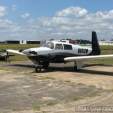With or Without Flaps?
-
Members Online
- Speed Merchant
- Jim F
- eman1200
- TCC
- Larry
- Jarerh
- Danb
- therodman2004
- M20 Ogler
- 67 m20F chump
- graham28105
- Red Leader
- 201Steve
- Aerodon
- slowflyin
- mmcdaniel33
- Crawfish
- Boboli
- gabez
- KLRDMD
- IvanP
- Ethan
- aviatoreb
- NickG
- Guillaume
- 1980Mooney
- Paul Thomas
- toto
- 201er
- Greg Ellis
- Sonar
- Scooter
- Sabremech
- Slick Nick
- DXB
- ElkoRandy20J
- Niko182
- PhateX1337
- kaba
- hubcap
- MoonMan
- donkaye, MCFI
- markgrue
- ArtVandelay
- wombat
- mooneyflyer


Recommended Posts
Join the conversation
You can post now and register later. If you have an account, sign in now to post with your account.